ELA Senior Management Level
SENIOR MANAGEMENT LEVEL – (EQF Level 6)
La certificazione “European Logistician Senior Level” attesta le competenze di persone che ricoprono ruoli manageriali con grado di responsabilità avanzato, quali ad esempio il responsabile dei trasporti, il direttore della logistica o per specialisti in logistica che hanno superato le posizioni iniziali e che aspirano a responsabilità più elevate.
Per ottenere l’ELA Senior Certificate è necessario sostenere un esame, scritto e orale, che copre diverse aree di competenza. La prova scritta è in lingua inglese mentre la prova orale è svolta in italiano.
Quattro moduli sono obbligatori (colore BLU) a cui il candidato ne aggiunge due di sua scelta (colore AZZURRO).

Contenuti dei moduli
Business Principles
- Understand the financial impact of holding inventory
- Understand cash to cash (C2C) cycle
- Be able to calculate Net Present Value (NPV)
- Monitor actual costs versus budgeted costs
- Prepare a business plan
- Understand how a pricing strategy is defined
- Assess business performance
- Make outsourcing decisions
- Define and implement a performance scorecard
- Design an appropriate organisation structure
Core Management Skills
- Demostrate excellent communication skills
- influence and coache others to achieve superior performance
- Demonstrate strategic thinking
- Facilitate change
- Understand the principles of situational leadership
- Understand the principles of Management By Objectives (MBO) and performance evaluation
Supply Chain and Logistics Design
- Analys the supply chain by using value stream mapping
- Understand what is required to implement a lean & agile supply chain
- Apply problem solving techniques
- Implement reverse logistics
- Understand the elements of a Cot-to-Serve model
- Identify and implement supply chain Key Performance Indicators (KPIs)
- Apply lean techniques to identify process improvement opportunities
- Use modelling to explore the impact of options on the supply chain
- Perform software functionality tests
- Define and manage the scope of a project
- Establish project governance structure
- Understand the concept of project management life cycle
- Apply phase gate process to a project
- Coach projects managers
- Apply a project methodology whilst managing a project
- Manage the costs of project
- Understand project quality management
- Implement a continuous improvement programme
Demand & Inventory Planning
- Improve the demand management process
- Implement collaborative forecasting
- Understand push/pull planning
- Optimise planning parameters to fine tune inventory holding
- Establishes safety stock
- Optimise Distribution Requirements Planning (DRP)
- Understand how to adapt inventory holding taking into account product cycle
- Identify causes for stock obsolescence and redundancy and proposa ways for minimising this
- Run the demand management, supply management and the scenario analysis of the Sales and Operations Planning (S&OP) process
- Understand functionalities of inventory optimisation tools
- Implement Vendor Management Inventory (VMI) process
- Develop Key Performance Indicators (KPIs) relative to inventory management
- Select and implement appropriate Information Technology Systems (ITS) such as Advanced Planning Systems (APS)
Warehousing
- Optimise warehouse costs
- Implement a health and safety programme
- Improve receipt of goods from suppliers
- Select appropriate storage systems
- Implement a 5S programme in warehouse environment
- Perform warehouse risk management assessments
- Define and implement Key Performance Indicators (KPIs) to improve warehouse operations
- Understand and implement appropriate technology in warehousing
- Select and implement appropriate IT systems such as a Warehouse Management System (WMS)
Transportation
- Optimise transport mode selection
- Evaluate freight market and select appropriate carriers
- Implement transport supplier agreements
- Optimise transport scheduling
- Select logistics service providers
- Design a distribution network
- Define and implement Key Performance Indicators (KPIs) to improve transportation
- Select and implement appropriate Information Technology (IT) systems such as a Transport Management Systems (TMS)
Sourcing
- Prepare sourcing plans
- Establish supplier agreements
- Create and manage collaborative supplier relationships
- Optimise negotiation strategies with all involved stakeholders
- Standardise and optimise operational purchasing process
- Select and implement electronic (e).Procurement tools
Customer Service
- Implements a customer service policy
- Establishes a customer service organisation
- Defines and implements Key Performance Indicators (KPIs) to improve customer service
- Selects and implements appropriate Information Technology Systems (ITS) such as Customer Relationship Management (CRM) Systems


